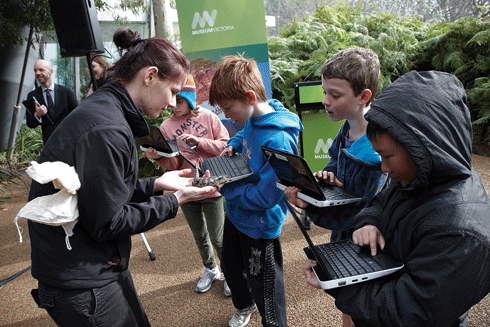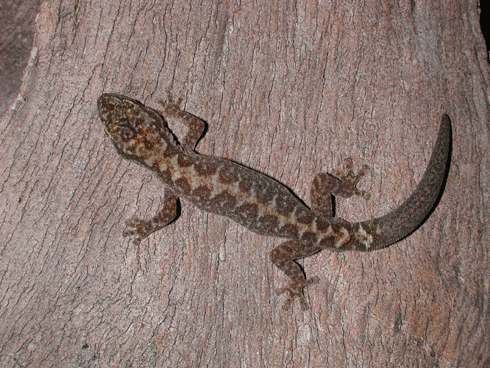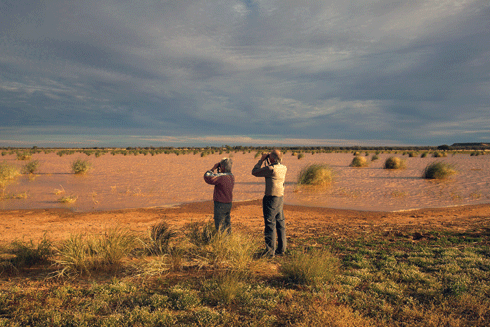
|
Published:
A minefield in the forests
Forest certification schemes promise to make forest management better for the environment, the communities that depend on the forests, and the forest managers themselves – but are they delivering?
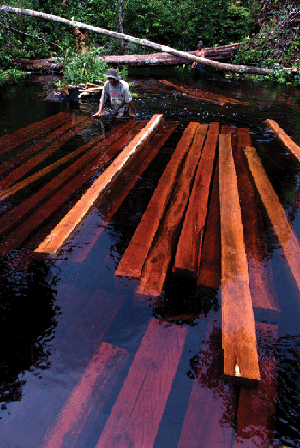
|
|
Illegally logged wood near Ketapang, West Kalimantan, Indonesia. Credit: Fauna & Flora International
|
Indirectly, the global financial crisis prompted two of Tasmania’s largest woodchip producers – Gunn’s and Norske Skog – to seek certification of their forest management from the Forest Stewardship Council (FSC), an international network that aims to promote responsible management of the world’s forests.
The companies’ major customers, Japanese paper producers, had preferentially bought FSC-certified woodchips for several years. Before the crisis, however, the Japanese demand was so great that Tasmania’s non-FSC certified product retained its market, and the State exported all the woodchips it could produce. But when markets plunged in 2008, the Japanese clients were able to meet their requirements with certified woodchips from other sources, leaving Tasmania out in the cold. The effects rippled through the entire Tasmanian economy.
According to Ms Zoe Ryan, Forest Carbon Specialist with Fauna & Flora International, such access to markets – as opposed to any increase in the value of wood products – is generally what makes certification and its attendant costs worthwhile for wood production companies.
‘From a financial perspective it makes sense for businesses to seek forest certification in order to gain market access, but they may not receive much of a price premium,’ says Ms Ryan. ‘FSC has put pressure on wholesale buyers to only purchase FSC-certified wood products, so certified companies can therefore access markets that are closed to non-certified products.’
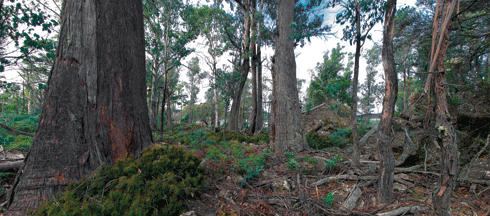
|
|
FSC-certified property, Lagoon of Islands, Tasmania. Credit: Phil Millner.
|
Mr Michael Spencer, Chief Executive of FSC Australia, agrees that market access is the key benefit, arguing that focusing on price premiums is a mistake.
‘Whether that market access translates into a price differential will inevitably depend on the market forces of supply and demand,’ says Mr Spencer. ‘In some product categories, it can mean a substantial price difference; in others, it can mean virtually none.’
Forest certification schemes
Forest certification can take two basic forms: forest management and chain of custody. Companies that harvest timber from native or plantation forests can achieve certification if their forest management practices meet a range of standards set by one of a number of certification schemes. Chain of custody certification allows wood to be tracked from where it was grown through to its final destination as a consumer product, so users can be sure they’re purchasing material from certified forests.
The two largest certification schemes are the FSC and the Programme for the Endorsement of Forest Certification (PEFC), both of which operate under a set of core principles and criteria (FSC’s principles are currently under review). The Australian Forestry Standard (AFS) conforms to PEFC benchmarks.
The AFS has certified more than 10 million hectares – around 90 per cent of the 11.3 million hectares of plantations and native forests from which timber is harvested – under the Australian Standard for Sustainable Forest Management. Globally, around 223 million hectares of forest have received PEFC certification, with FSC certificates accounting for around 135 million hectares.
Achieving certification
In 2004, Victoria-based HVP Plantations became the first Australian forestry company to be awarded FSC certification, and subsequently, the first to have dual certification together with the AFS. Mr Malcolm Tonkin, HVP’s General Manager for Stewardship and Risk, notes that the transition was not easy.
‘Getting certified takes a lot of work, and it means changing your culture and the way you do some of your operations,’ says Mr Tonkin. ‘We had some pretty tough times early where I think we didn’t understand our auditors terribly well and we perhaps didn’t understand the standard well enough. It wasn’t all a bed of roses, but then nor should it be. If they’d just come in and said “everything you’re doing’s fine”, then we’d be paying money and getting no value.’
Once certification is achieved, audits are carried out annually by an accredited certification body – The Rainforest Alliance’s SmartWood, in HVP’s case – with a complete reassessment every five years (HVP was re-certified in 2009).
‘Before 2004, we were reasonably close, but we had to do some additional work to meet the standard,’ says Mr Tonkin. ‘Since we’ve been certified, we have auditors observing gaps in our system that require further work. That’s part of a continual improvement and working through your processes to ensure that they’re advancing with the times.’
Forest certification critics and challenges
Certification schemes are not without their critics. Although FSC forbids the conversion of native forests to agricultural land or plantations (except in very limited circumstances), some environmental groups condemn the certification of any timber harvesting operations in forests deemed to be of high conservation value. This was one reason for the July 2010 resignation from FSC Sweden of the Swedish Society for Nature Conservation, the country’s largest environmental organisation.
The Society stated: ‘Year after year, we have seen forest companies violate the environmental criteria of the FSC standard by, for instance, logging old-growth forests, felling trees with high biodiversity values, creating deep wheel tracks in the soil and running over watercourses. Despite this, there are no sanctions for the companies involved.’
In response, Mr Spencer argues that this amounts to criticism of how effectively FSC standards are being policed and enforced, rather than of the standards themselves.
‘While the improvements delivered by FSC are demonstrable, there will always be people who take that for granted and throw the baby out with the bathwater,’ he says. ‘We need to ask these people what they propose would do a better job. I have yet to hear a convincing argument on this, and that is the credibility problem they have with the position they take.’
According to Ms Ryan, this goes to the core of one of the major challenges for forest certification schemes: making the standards as stringent as possible to improve forest management practices, but without dissuading forest managers from seeking certification and committing to improvement of practices.
‘If they raise the bar too high,’ she says, ‘they risk preventing any forest management company from actually achieving that certification, or going out of business if they did; in which case, the scheme risks severely limiting its coverage. It’s a real balancing act. Buyers of wood products need to play their part in improving forest management by rewarding sustainable companies through their purchasing decisions.’
FSC governance
Mr Spencer argues that one of the key advantages of the FSC system is its governance regime and the requirement for a balance between social, economic and environmental interests. This is manifested in the Social, Environmental and Economic Chambers that make up FSC’s membership.
Ms Ryan agrees, pointing out that although the structure makes development of the standards slow, the process itself is very valuable. ‘I think one of FSC’s greatest strengths is the process of the economic chamber sitting down with the social chamber, sitting down with the environmental chamber and talking,’ she says.
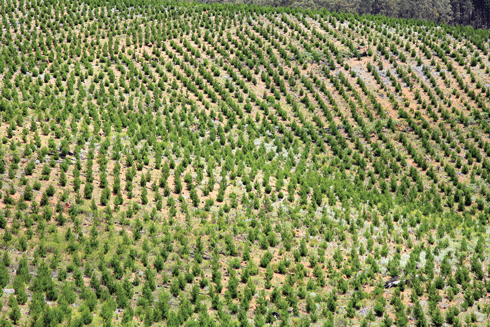
|
|
A young HVP forest plantation. Credit: HVP Plantations
|
Do FSC and AFS compete?
There is debate over whether FSC and AFS complement or compete with each other. Dr Hans Drielsma, General Manager of Forestry Tasmania and an AFS director, suggests that it’s a bit of both.
‘The two schemes really are seeking to achieve the same outcomes,’ says Dr Drielsma. ‘There’s a bit of competition because of the different ownerships and the different stakeholder support, but I think the complementarities are more important. Globally, less than 10 per cent of the world’s forests are certified, so there’s room for both.’
According to Dr Drielsma, the two schemes suit different circumstances. The focus should be on emphasising the complementarities in order to expand the take-up of certification globally. ‘The PEFC system gives more emphasis to national sovereignty, working with national forestry schemes and improving standards through that sort of process,’ he says. ‘The FSC process is more of an international template that works well in situations where there is no national capacity to deal with standards.’
More information
Forest Stewardship Council Australia: www.fscaustralia.org
Australian Forestry Standard: www.forestrystandard.org.au
Programme for the Endorsement of Forest Certification: www.pefc.org
Fauna & Flora International: www.fauna-flora.org
HVP Plantations: www.hvp.com.au
Forestry Tasmania: www.forestrytas.com.au


